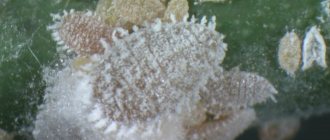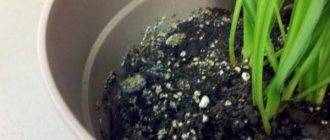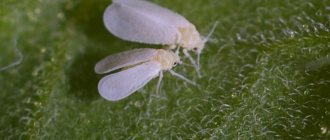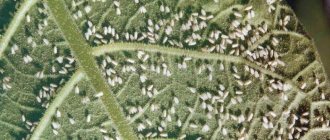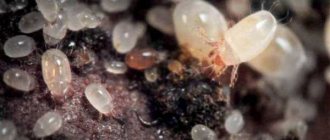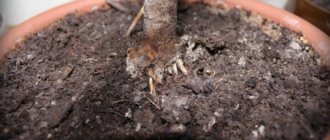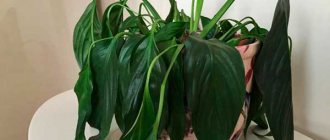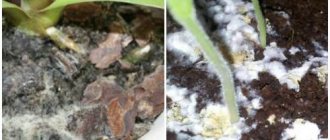A fairy tale about indoor plants for preschoolers
Fairy tale for children 5-7 years old
Educational fairy tale for preschool children “Green Hedgehog”
Author: Natalya Mikhailovna Golyshevskaya, senior teacher of MBDOU “Kindergarten No. 12” in Barnaul Purpose: this material is intended for preschool children Purpose: to expand preschoolers’ ideas about indoor plants Objectives: - to introduce children with features of appearance, structure, growing conditions of indoor plants; — teach how to perform labor actions to care for indoor plants; - develop curiosity, cognitive interest. Once upon a time there lived a Little Cactus. It was round, green and prickly. That's why they called him the Green Hedgehog. But he was prickly only on the outside, but in fact, the Cactus Child was very kind and sympathetic.
Recently, the owner separated him from his mother Cactus and planted him in a beautiful small pot. The little cactus liked his new house, but one thing upset him: plants unknown to him grew around him in large flower pots. But Little Cactus was sociable and inquisitive. He decided to get to know his “neighbors” better, because the Green Hedgehog so wanted to have friends! The first person the Cactus Kid dared to talk to was a plant with a thick, woody trunk, the round leaves of which looked like coins.
“Excuse me, please,” said the Green Hedgehog, a little embarrassed, “what is your name?” “People call me the money tree, people believe that I bring wealth and prosperity to the house, but scientifically I am called the tree crassula,” answered the tree. My homeland is the African savannah, so I love the sun. I also love it when my pot is turned from time to time, then I grow into a slender and beautiful tree. - Tell me, aren’t you bored of standing on the windowsill all the time? - asked Cactus. - No, of course, in winter I can watch what is happening outside the window, and in the warm season they send me “to the dacha,” that is, they take me out into the fresh air - onto the balcony. Here another plant with unusually beautiful leaves, on which bright red veins and spots stood out, intervened in the conversation: “And my name is arrowroot, I really love humidity and am afraid of direct sunlight, so I like it when the owner sprays my leaves with lukewarm water.” And I can also pick up leaves and fold them at dusk and even a few hours before rain, like a real barometer.
The little cactus listened very carefully to the stories of the plants, because he was still small and did not know much. An unusual plant grew in one of the pots; its dark green sword-shaped leaves with a pointed apex and light transverse stripes resembled fish scales. It turned out that this is a sansevieria, which is simply called “pike tail”. The little cactus even felt a little funny when he heard this name.
Suddenly the door opened and the hostess entered the room. In her hands was a pot with a very beautiful plant. “Meet this, this is your new neighbor,” she said (the owner often talked to her pets, because she believed that flowers, like living beings, understand everything and love when you communicate with them) “this is a fern. It will not only decorate the room, but also help clean the air from dust and harmful substances. It’s just a pity that the ferns don’t bloom, but they delight you with their varied leaves: huge, tiny and even curly.
The hostess put the pot down and left. So a “newbie” appeared on the windowsill. He quickly got used to the new environment and proudly talked about the fact that ferns are the oldest inhabitants of the Earth, existed along with dinosaurs and have survived to this day. So the Green Hedgehog not only met his “neighbors”, but also learned a lot of interesting and useful things.
We recommend watching:
For preschoolers about the seasons. A fairy tale about how Winter got lost. Summary of the GCD in the preparatory group on the topic “Getting to know the emotions.” A fairy tale for preschoolers. Shishkinsky Ponds Ecological fairy tale for children 6-9 years old
Similar articles:
A fairy tale about kindness for older preschoolers
Developing interest in folk art through familiarization with Russian folk tales in children of primary preschool age
Indoor flowers. (Fairy tale).
Once upon a time there lived a lonely poor Man. One day at the end of summer he walked past the city market. It was already evening, trading was over. The voices of the brisk salesmen calling were not heard. The counters were not full of colors with watermelons, melons, tomatoes and apples. The market is empty. And only a thin teenage girl stood alone at the entrance and sold indoor flowers. The man approached her and said: “It’s late, girl, the market has closed and it’s time for you to go home too.” The girl looked at the Man with wonderful blue eyes, and her face lit up: “Buy flowers,” and with a thin hand she showed, “here is the Money Tree, here is the Tree of Happiness, and this is health.” The Man smiled, he didn’t need indoor flowers, but, nevertheless, he patted his pocket, the silver rang in response and, feeling sorry for the girl, he bought the first flower that she pointed out to him. Came back home. He opened the door and gasped: there was money everywhere - on the table, on the windowsill, on the chairs, on the floor. Copper, silver, paper. They lay in neat piles, heaps, real rubble. With difficulty, moving his legs, because they were stuck in money, he walked up to the wardrobe, sharply opened the doors - and from the pile of money that fell on him from there, he could barely stand on his feet. From this evening Man said goodbye to need. He allowed himself everything that he had previously only admired in the crystal windows of luxury stores. The man dressed up from head to toe and felt very natural and comfortable in luxurious clothes, such is the property of all truly expensive things. I bought a shiny black car. I purchased a beautiful mansion with snow-white columns in the city center. He visited all the theaters, galleries and exhibitions, bought everything he wanted at bookstores and bookstores. Visited casinos and clubs. And little by little I got used to all the conveniences and advantages that money gives. Fed up with the respect and servility of the people around him. And one fine autumn day he wanted to visit the city without security, without a car with a personal driver. Just walk. The man put on his most modest gray cloak and went. He walked through all the places where before, dejected by worries and poverty, immensely tired from searching for work, in heavy, clumsy shoes that hurt his overworked feet, with despair and melancholy in his soul, he wandered. Now it was easy and pleasant for the Man to walk in stylish and comfortable shoes. An elegant cloak reliably protected him from the wind and the beginning rain. The rain turned to downpour. And the Man hastened to take refuge in the market building. At the entrance stood the same girl who sold him the Money Tree. She had two flowers left. Now money had no value for Man. He asked, smiling at the girl like an old friend: “What kind of flowers do you have left?” The girl answered: “The tree of happiness and the tree of health.” “The tree of happiness,” the Man picked up joyfully, “I just need happiness.” And I bought an indoor flower with round leaves. The Man arrived home by taxi and placed a new flower next to the money flower, which he had diligently looked after since he became rich. The room immediately became somehow lighter, warmer and more comfortable. Joy and a feeling of completeness of being filled the Man’s chest. It was as if he began to see better and brighter, to hear better. It became a pleasure to simply live, breathe, move, talk. Everywhere now: in buffets and restaurants, supermarkets and train stations - people, as if vying with each other, tried to please him, smiled, willingly entered into conversation. It was as if everyone suddenly fell in love with him, and he became a welcome guest everywhere. The man made friends, bright, creative people, communicating with whom was in itself a great happiness. He was invited to work for a foreign company in a position that he had dreamed about so much. And finally, he met a beautiful girl who soon became his bride. In a word, everything turned out just wonderful. But then a letter arrived from a distant small town with the news that his mother had been diagnosed with a terrible disease. This letter was handed to the Man on his birthday, at the height of the holiday. The man turned away from the guests to the window. It was raining outside. Streams ran down the glass and streams ran down the Man's face. And then his gaze fell on the indoor flowers. He remembered that the girl still had one more flower - the Tree of Health. The terrible thought flashed through his head like lightning that perhaps she had already sold him. Without even putting on his coat, the Man ran out of the house. It was already snowing and raining, there was a mess of snow and mud underfoot, but he didn’t pay attention to anything. With a quick step, almost running, the Man reached the market. The market was noisy, seething, living its own life, but the Man saw only a girl standing at the entrance and already giving a flower to some old woman. “Stop,” the Man shouted, “give him to me, my dying mother needs him now.” “No,” the old woman answered calmly, “You don’t see the Tree of Health very often, especially since I already bought it.” The girl looked at the Man and spread her hands helplessly. And the old woman with a flower in her hands trotted away. “Stop,” the Man shouted to her again, “I’ll give the Money Tree for him.” The old woman was silent, pursing her thin lips, and continued to walk, clutching the flower pot to her. “And in addition the Tree of Happiness,” he added. “Okay,” the old woman agreed, “but only today.” That same evening the Man flew to another city. All the way he held a potted flower on his lap, carefully wrapped in paper. He made it on time. The flower helped his mother. She remained alive. It is impossible to remain happy if the most important and dear person to you is seriously ill.
Large plants
The tallest are a variety of palm trees, ficus, dieffenbachia, yucca, hibiscus, and citrus trees. These plants should be placed on the floor in large, stable pots.
Citrus fruits, palm trees, ficus, and hibiscus should be placed closer to the windows or near the illuminated wall. Ferns, ivy, and Dieffenbachia feel good in the back of the room.
Hanging plants with long, hanging shoots decorate walls and window openings. These are hanging varieties of begonias and saintpaulias, saxifrage, ivy, and tradescantia.
Rice. 2. Ampelous begonia.
What have we learned?
Indoor plants grow and bloom well in conditions similar to those found in the wild region. In a message or story in a lesson on the outside world, you can talk about popular indoor flowers: violets, cacti, hibiscus, various palm trees and ficus.
Previous
The world around us Nomadic birds - definition, species, list of names and examples briefly (the world around us)
Next
The world around us What birds fly south? – listing migratory birds for children (2nd grade, the world around us)
The Tale of the Toad and the Rose
A beautiful and slightly sad story about the eternal confrontation between good and evil. In this fairy tale by Vsevolod Garshin, a silent but beautiful rose shared with the world a delicate aroma, which contained her love, prayer, and words. With its inner light, the flower tried to warm and delight all living things, living a short and bright life not in vain. And the nasty toad, who lives for himself and to fill his belly, was left with nothing.
Hibiscus
Wild hibiscus is common in tropical and subtropical regions as shrubs and trees. Chinese hibiscus is grown in greenhouses and as a houseplant. This is a plant with large flowers and shiny leaves. With proper care, it blooms actively all year round.
Does not tolerate cold temperatures below +12 °C, actively blooms at temperatures above +25 °C. New varieties with flowers of different colors and sizes have been developed.
Rice. 3. Chinese hibiscus.
Where to place the plant
Indoor plants are those that grow in apartments, educational and preschool institutions, theater lobbies and other public spaces.
To select a plant, several factors should be taken into account:
- draft and cold air from an open window;
- inconsistent temperature throughout the day;
- lack or excess of lighting;
- dry air with central heating radiators running;
- dust settling on the leaves.
For some types, a shelving unit installed slightly to the side, next to the window, is more suitable. There are varieties that grow well in the back of the room.
When purchasing a plant, you should find out in what conditions it grows in your region and what size it will reach. Then compare with home conditions and decide whether the plant is suitable for specific conditions.
How did Saintpaulias become indoor plants and appear in Russia?
Saintpaulia gained dizzying popularity in America at the beginning of the last century. There, societies of lovers of this flower began to be created, and breeders began to develop new varieties. The fashion for an unusual beauty quickly spread among citizens.
Americans, and later Europeans, decorated window sills and verandas with bright bushes. Firms that produced crop seeds became rich. Various magazines wrote about the characteristics and cultivation of this wonderful plant.
By the middle of the 20th century, information about Saintpaulia spread throughout the world. Violets, which effectively decorate interiors, turned out to be easy to grow and responsive to care.
In our country, the popularity of Saintpaulia began in the 60-70s of the last century . At first, plants could only be seen in botanical gardens. But after several materials about Saintpaulias were published in magazines, housewives are beginning to grow unpretentious bushes on windowsills.
